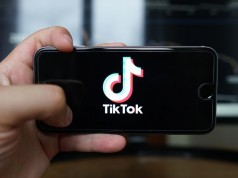While many of us in mid-November are thinking about the upcoming holidays and travel plans, and quality time with loved ones, business and marketing leaders are crunching numbers and having very tough discussions about their budget for the new year before 2020 comes to a close.
As you are looking back at the years of successes and (let’s face it) drawbacks, it’s important to look ahead to what the marketing industry as a whole has in store and to seek out new opportunities to engage your audience. Here are the marketing trends that leaders should consider when preparing a budget.
Marketing Trends that Leaders Should Consider When Preparing a Budget
1. Content has become core to marketing (and sales, too)
One of the biggest trends in content marketing departments is content. Content has become the core of what your marketing team does, so you need to focus on it, and estimate the correct budget for it.
If you have not created a content marketing plan, and if you have created a strategy, make sure it adjusts with the direction you’re wanting to go and determine that you have the resources you need.
While you’re thinking through how content will work for you, don’t forget about the goals you share with your sales team, and how content plays a role in achieving them. Pay attention to sales trends and think through ways in which content can smooth your individual sales process.
Content has become the fuel for so many of your marketing and sales departments’ biggest goals, so your budget should reflect what we are writing about.
2. Chatbots will offer benefits beyond customer service
Audiences are looking for more trustworthy, helpful interactions with brands, and they want those touchpoints to happen on their terms. Chatbots can help your audience members where they are, what position they are in, and inform your marketing strategy with insights directly from them at the same time.
According to recent research,
- 73% of marketers say they use their website analytics to research their audience
- But only 42% say they use actual audience conversations
That’s a missed opportunity for relationships and messaging, and if marketers want to close that gap, they need to look into chatbots to give audience members what they are looking for and when. But they also need to make it easy to deliver that information to them.
3. Alternative search formats are on the rise
Just as there are different ways to communicate your message. There are different ways for audience members to search for their content.
- Voice search is on the rise
- with Google announcing plans to make visual content more useful in search
- marketers need to be prepared for the rise of alternative searches
According to recent research, we mentioned earlier that more than half of the marketers increased their use of image-based content by more than one-third of increased audio-only content. This indicates marketers are moving in the right direction by producing more and types of content for audiences.
If you’re creating different kinds of content without also thinking through how your audience will find it, it’s not going to do a lot of good. As we go into 2021, prioritizing multimedia content and the alternative search will be important.
4. Marketing and PR will continue to overlap
As content keeps growing, marketing and PR teams are going to see more overlap. However, these two teams are not or will ever become the same. But brands are starting to realize that marketing and PR share some common goals and work well together for the development, and they’re making it a point to bring these two teams into closer proximity.
PR has evolved a lot in recent years.
- It’s less about the template
- mass-distributed messaging of the past
- much more about engaging content that’s valuable to brands
- reporters
- their audiences.
Engaging content sounds familiar because it’s central to what marketing is all about and why should we market all these products. Hence, Marketing and PR can work together to enhance each other and deliver more value to the bottom line and audience.
5. Security and data privacy will be major concerns
Finally, to say it’s not been a great year for privacy, would be an understatement. If you value online security and the privacy of your information, then the seemingly endless stream of news stories about data breaches and hacks might be making you uneasy. And your audience probably feels the same way.
Online security of personal information is growing in demand for all consumers, and marketing leaders must accommodate this development. The 2018 rollout of the General Data Protection Regulation in the EU was a big step in that direction.
Finally, as audiences’ trust in media privacy grows, which is very dangerous, marketers will need the processes to responsibly collect, store, and protect their audience member’s information to maintain the trust they’ve worked so hard to earn this money.









